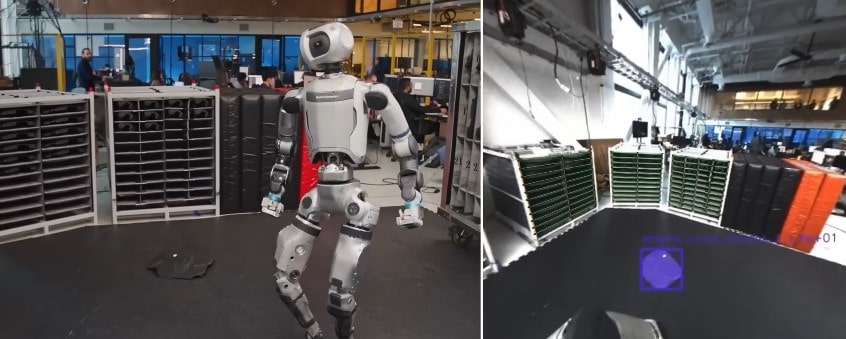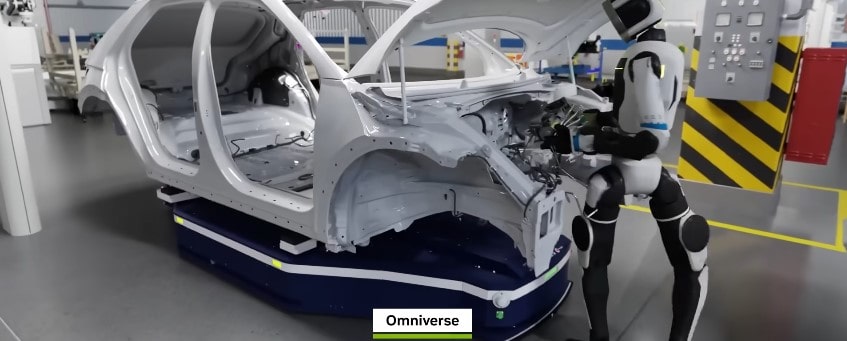Boston Dynamics has just released another captivating video, giving us deeper insight into how its Atlas humanoid robot perceives and navigates the world. It’s not just about picking up parts anymore—Atlas is evolving to become more versatile, intelligent, and general-purpose.
How Atlas Sees and Understands the World
Atlas isn’t just responding to commands—it’s actively perceiving and reacting to its environment in real-time.
Vision System Breakdown
| Component | Function |
|---|---|
| Camera | Identifies objects, hazards, and boundaries |
| Red & Green Key Points | Represent perception of important task-relevant areas |
| 3D Modeling | Helps in depth perception and orientation of items and surroundings |
| Joint Feedback | Assists in tracking positions of grippers even when visibility is blocked |
“Atlas needs to be constantly updating its model of the world around it.”
Atlas creates a 2D visual picture and a 3D model of the world to understand:
- How far away objects are
- How to orient itself and the objects
- Where to place things accurately
- How to recover when view is temporarily blocked
Performing Real Tasks: The Engine Cover Challenge

In the latest demo:
- Someone throws an engine cover to the ground.
- Atlas:
- Identifies it.
- Recognizes its relevance to the current task.
- Uses unique footwork to retrieve it.
- Places it correctly—with a gentle punch.
- Wraps up with a thumbs-up to the camera.
“A bit more delicate than the punches we’ve seen thrown by UniTree’s humanoid robots.”
Moving Beyond One-Task-at-a-Time Training
The robotics industry is shifting from task-specific training to general-purpose learning.
Why This Matters:
- Robots will no longer require new programming for every small change.
- One training session can enable multiple capabilities.
- It makes robots more adaptive in real-world scenarios.
Nvidia DextrAH-RGB: Training in Simulation

A key part of this transition is simulation-based training. Boston Dynamics used:
NVIDIA’s DextrAH-RGB Workflow
| Feature | Description |
|---|---|
| Simulation-first | Entirely trained in a simulated environment |
| Real-world transfer | Model is then deployed in real-world settings |
| Error recovery | Robot can stop and retry actions if it detects an issue |
| Gripping Variations | Torso-only version of Atlas shown gripping a range of different objects |
“Atlas is shown grasping a variety of objects and even manages to stop and retry when it detects something going wrong.”
Key Takeaways
- Atlas combines vision, depth mapping, and sensor feedback for precision tasks.
- Boston Dynamics is pushing for generalized training models in robotics.
- NVIDIA’s simulation tools are enabling robots to learn more effectively before facing the real world.
Final Thoughts
Atlas isn’t just a robot performing a pre-set function—it’s a learning machine adapting on the fly. As Jesse Oral, the video host, signs off:
“What do you think about how Atlas and robotics in general are developing?”
